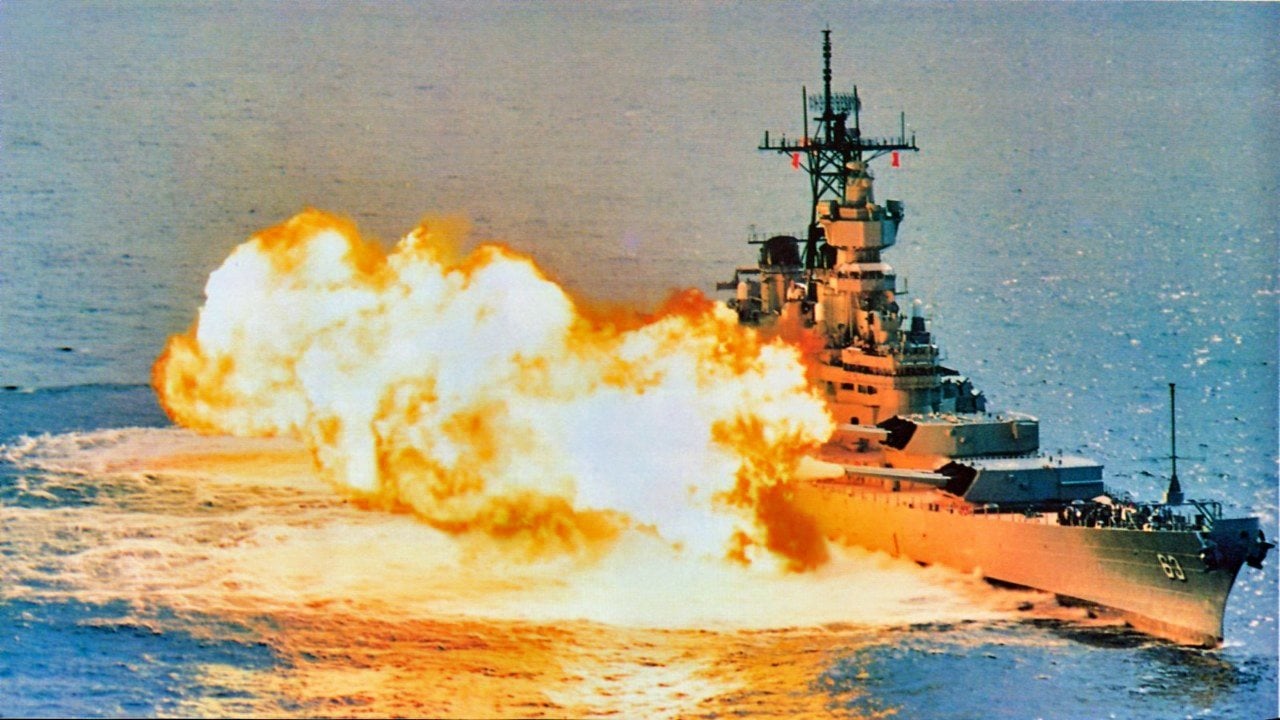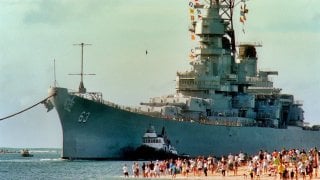U.S. Navy Iowa-Class Battleship USS Missouri's 'Comeback' Is Almost Complete
The project began following the former USS Missouri's drydock in 2010 and involved the restoration of 48,000 square feet of teak deck. According to the Battleship Missouri Memorial, the endeavor required an estimated 68,514 hours, along with an investment of $6,193,535 – covering the costs of teak, supplies, and labor.
Summary: The preservation of historic battleships, such as the USS Missouri (BB-63) and the USS New Jersey (BB-62), highlights the ongoing challenge of maintaining these steel giants against the ravages of time and the elements. Recently, significant restoration projects have been undertaken to ensure these ships remain intact as floating museums. The USS Missouri, notable for its teak deck where the WWII surrender was signed, underwent a massive deck restoration that required thousands of hours and substantial funding.
-Similarly, the USS New Jersey is receiving hull maintenance to prevent corrosion.
-These efforts underscore the importance of preserving such historical artifacts for educational and commemorative purposes.
Restoring the Mighty Mo: USS Missouri's Teak Deck Gets a New Lease on Life
The greatest threat to a battleship isn't a hypersonic missile, autonomous torpedo, or even a stealth drone. Rather, it is time and the elements. There are only eight surviving battleships, which are now maintained as floating museums – and each requires significant maintenance to preserve them for future generations, even if they'll never sail into combat again.
Currently, the former USS Texas (BB-35) is undergoing a major restoration and was only recently returned to the water after damage to her hull was addressed; while the Iowa -class battleship USS New Jersey (BB-62) recently headed to drydock in Philadelphia, where the hull will be inspected and receive a fresh coat of corrosion-resistant paint.
Thousands of miles away, BB-62's sister ship USS Missouri (BB-63) has just undergone a perseveration project to restore the battle wagon's teak main deck. Earlier this week, Mike Carr, president and CEO of the Battleship Missouri Memorial – which maintains the historical warship – ceremoniously laid the final teak plank on the main deck, marking a significant milestone in the preservation of BB-63.
Steel Ships and Wooden Decks?
The wood deck may not seem all that impressive given the space-age materials used in modern warships, but the Iowa-class vessels were very much a product of the 1930s and while they may have had thick steel armor, the decks were almost a throwback to another era.
The keyword is "almost" – the decks aren't actually wooden, but rather consist of wood planks over the steel armor. This was done to help absorb sound and vibration, which provided a quieter and more comfortable working environment for the crew. Wood doesn't conduct electricity, and is more resistant to corrosion. The teak protected against the sparks from metal-on-metal contact, reducing the risk of fires during the transportation of gunpowder. It also provided insulation for the vast deck area, shielding it against the sun's heat.
Restoring the deck was done to further preserve the vessel, but due to its historic significance. It was on the teak deck of the USS Missouri while she was docked in Tokyo Bay that officials from the U.S. and Japan signed the Instrument of Surrender on Sept. 2, 1945, officially ending World War II.
Replacing the aging wood wasn't quick or easy.
The project began following the former USS Missouri's drydock in 2010 and involved the restoration of 48,000 square feet of teak deck. According to the Battleship Missouri Memorial, the endeavor required an estimated 68,514 hours, along with an investment of $6,193,535 – covering the costs of teak, supplies, and labor.

That doesn't include the "free labor" that was provided just last year to help maintain the battleship. In total, 3,059 volunteers collectively provided 9,728 hours of service, which equated to more than $243,205 in labor costs to the Mighty Mo.
"Our volunteers are a cornerstone of the Battleship Missouri Memorial’s operations as not only a non-profit organization but also in ensuring we continue to preserve her place in history," said Carr. "The thousands of hours of hard and laborious work and ongoing dedication has helped with the upkeep of the Mighty Mo so visitors from around the world can continue to learn about her story."
Author Experience and Expertise: Peter Suciu
Peter Suciu is a Michigan-based writer. He has contributed to more than four dozen magazines, newspapers, and websites with over 3,200 published pieces over a twenty-year career in journalism. He regularly writes about military hardware, firearms history, cybersecurity, politics, and international affairs. Peter is also a Contributing Writer for Forbes and Clearance Jobs. You can follow him on Twitter: @PeterSuciu. You can email the author: [email protected].


